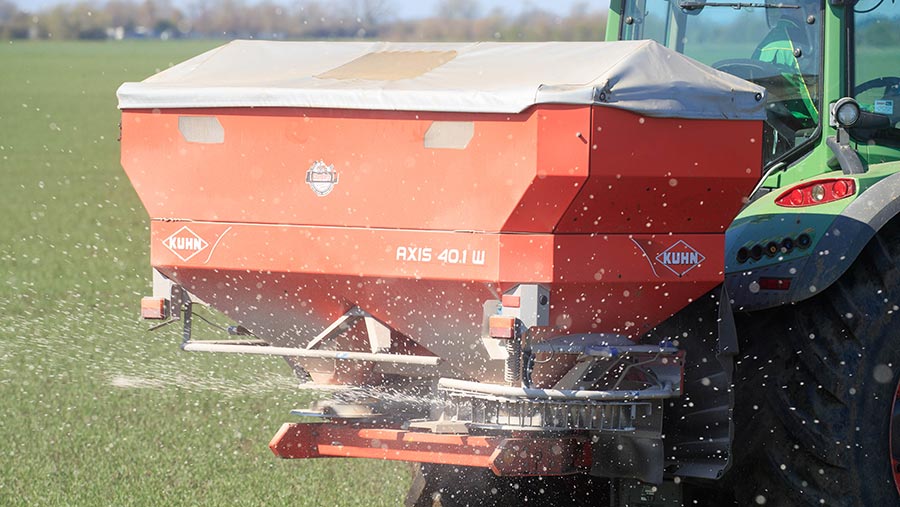Trial brings hope for farmer-made low-carbon fertiliser
 © Tim Scrivener
© Tim Scrivener New technology that harnesses lightning’s nitrogen-fixing properties could revolutionise nitrate fertiliser production and supply, while cutting carbon emissions and improving soil health.
An 18-month feasibility study between agri-tech start-up Debye and Agri-Tech Centres Crop Health and Protection (Chap) and Agri-EPI is taking place at Chap’s vertical farming facility at Stockbridge.
The project to trial Debye’s ground-breaking system, which simulates lightning’s ability to capture nitrogen in the form of nitrates when it strikes water, is funded by Innovate UK and the Biotechnology and Biological Sciences Research Council.
See also: Why urea fertiliser use is changing this spring
Debye’s chief technical officer, Dr Burak Karadag, who developed the technology, was originally a space engineer, working on satellite propulsion, when he became interested in the properties of lightning and decided to see if he could apply space technology to challenges on earth.
He explained that their technology uses air, water and electricity to replicate lightning striking water, breaking apart atmospheric nitrogen molecules and creating nitrogen dioxide, which is soluble in water and readily absorbed by plants.
The objective is to develop a 1kW proof-of-concept prototype and to quantify and compare crop yields and quality using nitrogen produced by it to crops grown using standard nitrogen fertiliser.
If the trial is successful, Debye could start small-scale on-farm projects within three years.
Debye envisages modular and containerised systems sited on farms or hubs, giving farmers an on-farm or local supply of nitrate-based fertiliser.
Burak said synthetic fertiliser production accounts for 5% of global greenhouse gas emissions, equivalent to half of total emissions produced by the EU27 in 2021.
However, Debye’s locally produced, renewably powered direct nitrogen capture technology could make it a near zero-emission process, which is local, secure and better for soil health.

